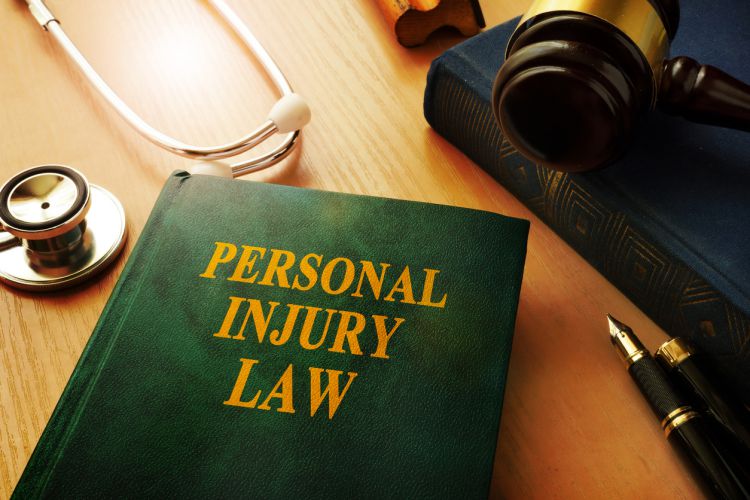 In the United States, personal injury laws and statutory rules are primarily derived from tort law. Whereas a tort is a civil wrong subject to an action for damages, a personal injury is any physical harm resulting from another person’s wrongful act or omission. These injuries include negligence and intentional acts.
In the United States, personal injury laws and statutory rules are primarily derived from tort law. Whereas a tort is a civil wrong subject to an action for damages, a personal injury is any physical harm resulting from another person’s wrongful act or omission. These injuries include negligence and intentional acts.
A tort is an act, omission, or failure to act for which the law provides a remedy to compensate for the damage that it causes. The most common examples of torts in the United States are negligence and intentional acts, although not all intentional acts are torts.
On the other hand, Statutory rules are not usually recognized as torts but as a legal remedy for injuries. Statutory regulations tend only to cover negligence, and unlike torts, they typically do not require a plaintiff to prove negligence. They are also not subject to the usual course of action for a tort case.
It is important to note that statutory rules are usually not a substitute for tort law, and the injured party must still compensate for any injury resulting from an act covered by the statutory rule.
The theory of personal injury is that each person owes every other person a duty to take reasonable care not to injure others, or at least not to be negligent. If a person breaches this duty, thereby causing injury to another, the person must compensate the injured party for any resulting damage.
The Kind of Injuries Personal Injury Law Includes
1. Auto Accidents
Auto accidents are the most common type of personal injury, and the types of personal injuries are varied. In addition to apparent physical damage, auto accidents can produce a variety of unique injuries.
2. Slip/Trip & Fall
Slip, trip, and fall injuries can result from various dangers in the workplace or public places. This may include, wet floors or uneven sidewalks.
3. Premises Liability
Premises liability refers to property owners’ duty to ensure that visitors are not injured on their premises due to hazardous conditions or faulty equipment. This can involve situations where the property owner knew, or should have known, that an unsafe condition exists but failed to correct it.
4. Construction Site Accidents
Construction site accidents are one of the most common personal injury cases. The most common injuries are head, back, and neck injuries sustained while working with heavy equipment.
5. Medical Malpractice
Medical malpractice involves personal injury arising from professionals’ negligent or incompetent medical care.
6. Product Liability
Product liability refers to claims of personal injury resulting from defective products, usually from a manufacturer’s failure to warn of dangerous potentials adequately.
7. Wrongful Death
Wrongful death claims are brought by the surviving family members of a person killed due to another person’s negligence or intentional act.
What Personal Injury Law Can and Cannot Do
Personal injury law can give injured persons three types of remedies. These are:
In those states that permit it, punitive damages can be given in the personal injury lawsuit to punish the person who has caused the injury and to discourage them or others like them from causing future injuries. Punitive damages can be used to cover the expense of medical care and rehabilitation, loss of wages, and personal property replacement.
In those states that permit it, the plaintiff may be able to obtain temporary or permanent disability benefits. The state pays these benefits and can compensate for the loss of income, medical care, funeral expenses, and rehabilitation costs. Often, these benefits are supported by the defendant’s insurance company.
In those states that permit it, the plaintiff may obtain compensatory damages for pain and suffering in addition to temporary or permanent disability benefits. These damages are awarded by a jury from which the plaintiff chooses.
Personal Injury Law Covers Situations In Which the Following Occurs
1. Physical, Mental, or Reputational Injury
A person injured by another’s conduct can obtain compensation for their injury in monetary damages. A personal injury lawyer usually accomplishes this.
2. Wrongfully Caused
A wrongful injury is caused by another’s violation of a statute. In some cases, the victim must show that the conduct causing their damage is a violation of an ordinance instead of merely being negligent.
3. Everyday Situations
The law of personal injury covers a wide range of everyday situations, from auto accidents caused by drunk drivers or speeding to dangerous, unsupervised swimming pools to equipment that injures workers.
New York Malpractice Lawyers
New York malpractice lawyers represent clients who suffered injuries due to medical errors or malpractice. In such a case, the injured person may be entitled to compensation for any damages. A medical malpractice lawyer can provide more information on the process and help collect evidence to establish fault.











